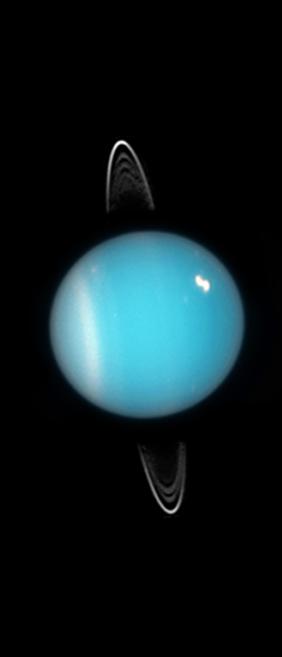Glossary term: Ring
Description: The four giant planets in our Solar System (Jupiter, Saturn, Uranus, and Neptune) – for exoplanets, we cannot yet tell – are surrounded by numerous small pieces of ice or rock, micrometers to meters in size, in the shape of large rings. The most spectacular rings are those surrounding Saturn: An intricate system of rings separated by gaps. Some of that structure comes about through interaction with Saturn's larger moons, and two gaps are opened up by tiny moons orbiting inside them. There are several hypotheses about how the rings formed, most of them involving a moon torn apart or stripped through Saturn's gravity. There are estimates that Saturn's rings will have dissolved in a few 100 million years – not a very long time by astronomical standards. Jupiter, Uranus, and Neptune have less pronounced ring systems.
Related Terms:
See this term in other languages
Term and definition status: This term and its definition have been approved by a research astronomer and a teacher
The OAE Multilingual Glossary is a project of the IAU Office of Astronomy for Education (OAE) in collaboration with the IAU Office of Astronomy Outreach (OAO). The terms and definitions were chosen, written and reviewed by a collective effort from the OAE, the OAE Centers and Nodes, the OAE National Astronomy Education Coordinators (NAECs) and other volunteers. You can find a full list of credits here. All glossary terms and their definitions are released under a Creative Commons CC BY-4.0 license and should be credited to "IAU OAE".
If you notice a factual error in this glossary definition then please get in touch.
Related Media
Saturn
Credit: NASA, ESA, A. Simon (Goddard Space Flight Center), and M.H. Wong (University of California, Berkeley) credit link
License: CC-BY-4.0 Creative Commons Attribution 4.0 International (CC BY 4.0) icons
Uranus with rings
Credit: NASA, ESA, and M. Showalter (SETI Institute) credit link
License: PD Public Domain icons










